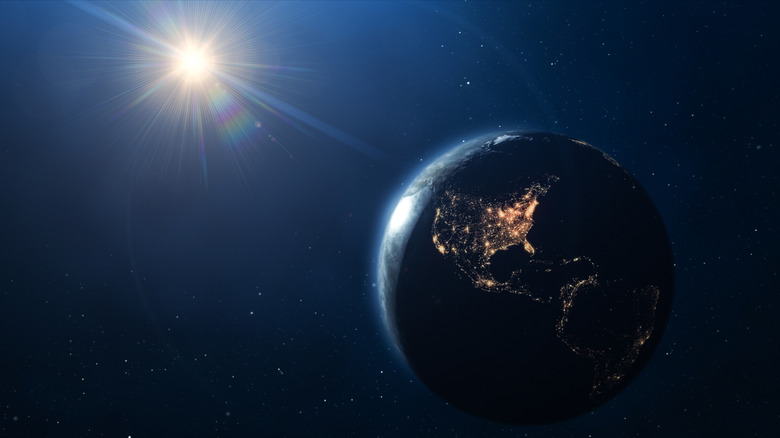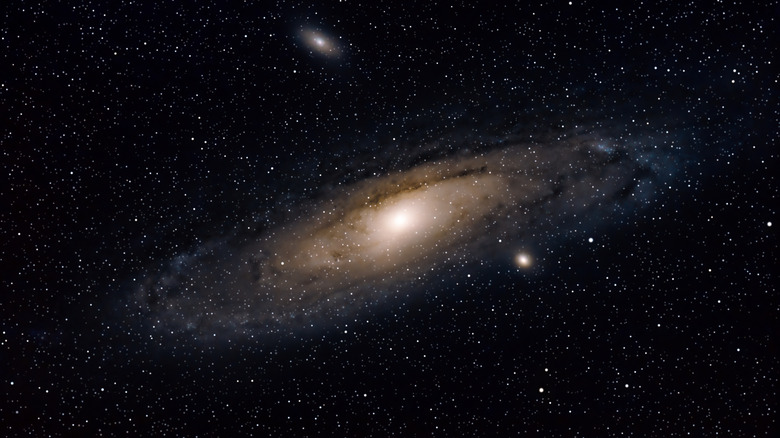
Drpixel/Getty Images
When you see art of our solar system as the planet orbit the sun, you may notice that Earth’s orbit has a tilt. It is not a perfect circle. What’s more, Earth is not the only planet that displays such a tilt. Though Earth’s orbit may have also been altered by a passing star millions of years ago, this particular tilt has been a source of scientific fascination. Though it was not understood previously, new research may be able to offer an explanation, and it mainly involves warping.
The Atacama Large Millimeter/submillimeter Array (ALMA) Large Program exoALMA has helped to better view the structures of planetary disks. Utilizing exoALMA, a team of researchers wanted to learn what has caused the strange, large-scale tilting patterns seen in young planetary disks. The team’s focus was to test whether small warps, such as slight bends in the disks, could be the cause.
The team’s findings were published in the Astrophysical Journal Letters under the title “exoALMA. XVIII. Interpreting Large-scale Kinematic Structures as Moderate Warping” in August of 2025 by the American Astronomical Society. The publication details that they found the warp idea not only fits the data, but it is also linked to other features like spirals and accretion rates. This suggests that disk warping could be central to how planets ultimately form.
The research to explain planetary tilt

Mihai_Andritoiu/Shutterstock
The researchers believed the tilting patterns could be explained by the disk itself being slightly bent or warped, naturally changing how gas and dust move. These bends can influence how dust gathers and settles, how turbulence forms, and how planets eventually take shape. In other words, disk warping could be a huge piece in the puzzle of how planetary systems are built, including our own solar system with its planets and millions of interstellar objects.
The researchers tested whether small tilts in a disk could explain the unusual motion patterns seen in the exoALMA data. They used velocity maps of gas around young stars, compared those maps against a rotation model, and then studied the leftover differences. They applied a straightforward approach that treated the disks as a series of slightly tilted rings. This allowed them to estimate how much the disk might be warped, and then compare those results across different systems.
The lead author of the study is Dr. Andrew Winter. He is a Royal Society University Research Fellow in astronomy at the Queen Mary University of London. He told the American Association for the Advancement of Science (AAAS) news, “Our results suggest that protoplanetary disks are slightly warped. This would be quite a change in how we understand these objects and has many consequences for how planets form. Particularly interesting is that the couple of degree warping is similar to the differences in inclination between our own Solar System planets.”
The study’s findings

Bymuratdeniz/Getty Images
The publication concluded that many of the unusual patterns in young planetary disks can be explained if the disks are slightly bent or warped. These small tilts were able to reproduce many of the large-scale features seen in the data, making warping a strong explanation. While it isn’t the only possible answer, the evidence lines up with the idea that warped disks are fairly common. The warping may also contribute to other features such as the spiral patterns seen in scattered light around certain stars.
The research team also discovered that the amount of warping may be linked to how actively the star at the center is pulling in materials. This would create a strong correlation between the inner and outer regions of the protoplanetary disc; perhaps, it could even have some relation to how some stars have feasted on a planet. The publication does note that more data is needed to confirm the trends found, but that the study supports warping as an important factor in explaining how stars and planets grow. In the future, warping should be studied alongside other theories which explain the formation of protoplanetary disk structures.
Dr. Myriam Benisty is the Director of the Planet and Star Formation Department at the Max Planck Institute for Astronomy. She stated in AAAS news, “exoALMA has revealed large scale structures in the planet forming disks that were completely unexpected. The warp-like structures challenge the idea of orderly planet formation and pose a fascinating challenge for the future.”

